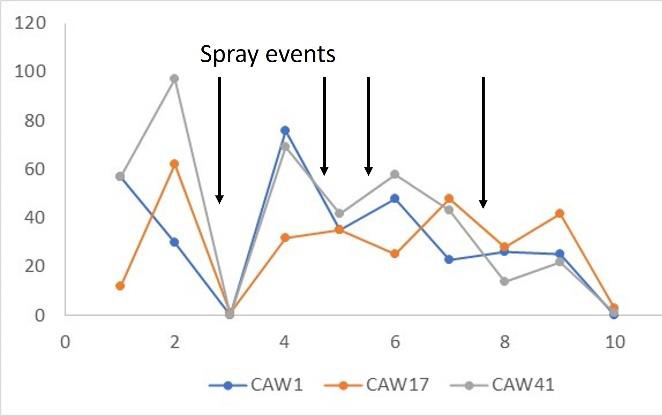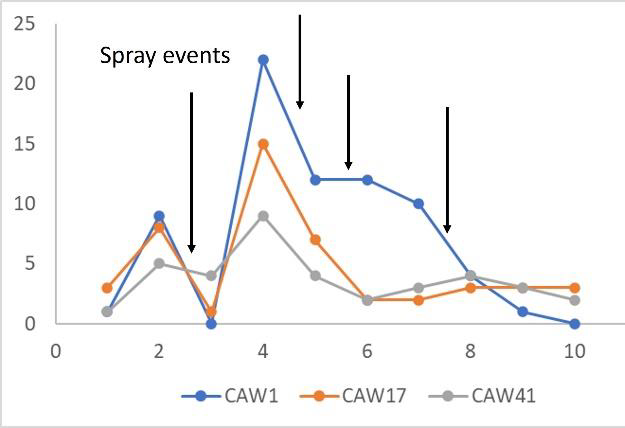Aroostook Hops, Westfield, ME
Project Summary (full report available at www.aroostookhops.com)
The purpose of this project was to determine if a broad-spectrum OMRI-certified insecticide can be used to control major pests of hops (including leafhoppers) to increase hop productivity without creating other pest management challenges or a reduction in beneficial arthropods. We used pyrethrin treatment in a one- and three-acre hopyard in several different regimes culminating in a final year of complete pyrethrin coverage. We sampled arthropods, plant biomass and yield, and hopperburn to determine if spray regime or location (edge versus interior) impacted measures of hop production and management. There was evidence from all three measures that pyrethrin positively impacted management of hops pests and improved yield in hops, without resulting in other pest management issues. Thus, we will continue to use and evaluation pyrethrin to target pest populations and we advise other farmers to consider this approach. However, there is evidence that leafhoppers are able to rapidly repopulate small hopyards and potential evidence of selection for resistance to pyrethrin treatment. Thus, this approach should utilize arthropod sampling or scouting to monitor effectiveness.
Summary of Important Findings
- Pyrethrin application may greatly reduce leafhopper abundance (although the effect may be short-lived)
- Plant biomass and wet yield was higher in pyrethrin treated plots
- Few to no aphids or two-spotted spider mites were detected during these years or in relation to pyrethrin application
- The predominant leafhopper pest was NOT potato leafhopper (Empoasca fabae), but was a similar species in the genus Hebata (formerly Empoasca)


This material is based upon work supported by the National Institute of Food and Agriculture, U.S. Department of Agriculture, through the Northeast Sustainable Agriculture Research and Education program under subaward number FNE21-977. Any opinions, findings, conclusions, or recommendations expressed in this publication are those of the author(s) and do not necessarily reflect the view of the U.S. Department of Agriculture.
